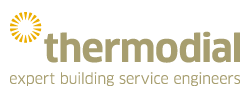Ensure that your building or work environment gets the protection it needs over the winter months, with energy saving, cost saving and energy efficiency to the fore.
Below are 10 of our top tips from observations and knowledge accrued over 36 plus years’ of building maintenance work.
If you need any additional information, please contact your Thermodial service engineer, or contact us directly »
View below or ![]() Download Thermodial 10 top energy saving tips for winter [pdf 239 KB].
Download Thermodial 10 top energy saving tips for winter [pdf 239 KB].
|
1
|
Time clocksCheck that any time clocks are set to the required building occupancy times and days [setting of the incorrect days is a common issue we encounter]. In particular, check settings after any power outages. |
| No energy wastage should occur, as the building is not being heated when staff aren’t in occupancy. Also, automatic mode will eliminate any danger of 24/7 operation that could occur if manual mode is switched on. |
|
|
2
|
Frost thermostatsEnsure that the outside frost thermostat is set correctly and that its calibration is accurate. The frost thermostat should operate internal pumps when the outside temperature drops to 5 °C, thus protecting the building from frost damage. A second frost thermostat, the immersion frost thermostat should be checked also. It enables the pumps and boiler to operate on a signal from the outside thermostat. |
| Correct calibration of the thermostats will save on energy use. If the outside frost thermostat is set too high, it may cause pumps and boilers to operate all night, unnecessarily. 5 °C is the ideal setting. | |
|
3
|
Air handling unit (AHU) – air conditioningIf your workplace contains air conditioning units [which, both heat and cool] be aware that poor maintenance of AHU plant can lead to dirty filters and loose slipping belts. |
| An AHU with dirty filters and loose belts has to work harder to pull in fresh air from outside and therefore uses more energy. This can be avoided, see our advice on saving energy and maintaining filters » | |
|
4
|
Servicing and recordsHave your boiler serviced and ensure you’ve checked the combustion analysis results with your service maintenance provider. The combustion analysis measures the efficiency at which the boiler operates. |
| As winter is a period of high demand on a boiler, your energy use soars. Check the efficiency of the boiler and compare it to the manufacturers’ specifications [google it], to ensure the boiler operating economically. | |
|
5
|
Heating systems – waterThe majority of commercial/industrial heating systems are closed water systems. However, for a variety of reasons, water inside those systems can become dirty and/or corrosive. |
| Periodic flushing out of the closed heating system will ensure a more energy efficient system. Future costly repairs due to corrosive water can be avoided by having a water sample taken annually. | |
|
6 |
Plant/equipment operation timesLocalised plant/equipment, such as ICT equipment, air conditioning units, lights and radiators should be monitored, particularly in periods of low occupancy. |
| Think about switching off some of the above, earlier or even at lunch time, to save on energy use. In addition, a policy can be set up and time clocks can be placed on ICT equipment to eliminate human error, see our advice on saving energy on ICT equipment » |
|
|
7
|
LightsLighting makes up approximately 30% of energy spend. Examine the cost/benefit of replacing lights with their energy efficient equivalents and installing passive infrared (PIR) sensors. |
| Replacing lights with their energy saving equivalents can see lights lasting up to 12 times longer, if in operation for more than 4 hours per day. PIRs are the most energy efficient method of control and can have a payback of less than 12 months in many cases. |
|
|
8
|
Room thermostatsEnsure room thermostats are set to the appropriate temperature levels. Room thermostats protect the room from the cold by bringing on heating, should the room temperature fall below the thermostats’ set point. |
| The higher the room thermostat temperature, the more energy it will use. This could unnecessarily waste energy, particularly if the thermostat is set anywhere above 21 °C. Note amend to a higher temperature in summer. | |
|
9
|
Digital energy metersHave you examined your energy budgets for next year? Are your bills too high? Why not undertake a cost/benefit analysis of digital energy metering, via a building energy management system (BEMS). We have engineers skilled in digital energy metering, using Cylon’s Active Energy system. |
| Digital energy meters will save you money on your energy spend [including water]. Typically the lowest saving is around 10%. In some instances it can be as high as 30%. | |
|
10 |
Replacement of equipmentAsk your service maintenance company if a more energy efficient model of plant/equipment is available. |
| More energy efficient models will save on corporation tax, energy use and will result in a lower maintenance spend. See the Sustainable Energy Authority of Ireland’s [SEAI] accelerated capital allowances tax incentives » | |
|
FINAL TIP |
Make use of the knowledge and advice of the SEAI through their SME Guide to Energy Efficiency » |
